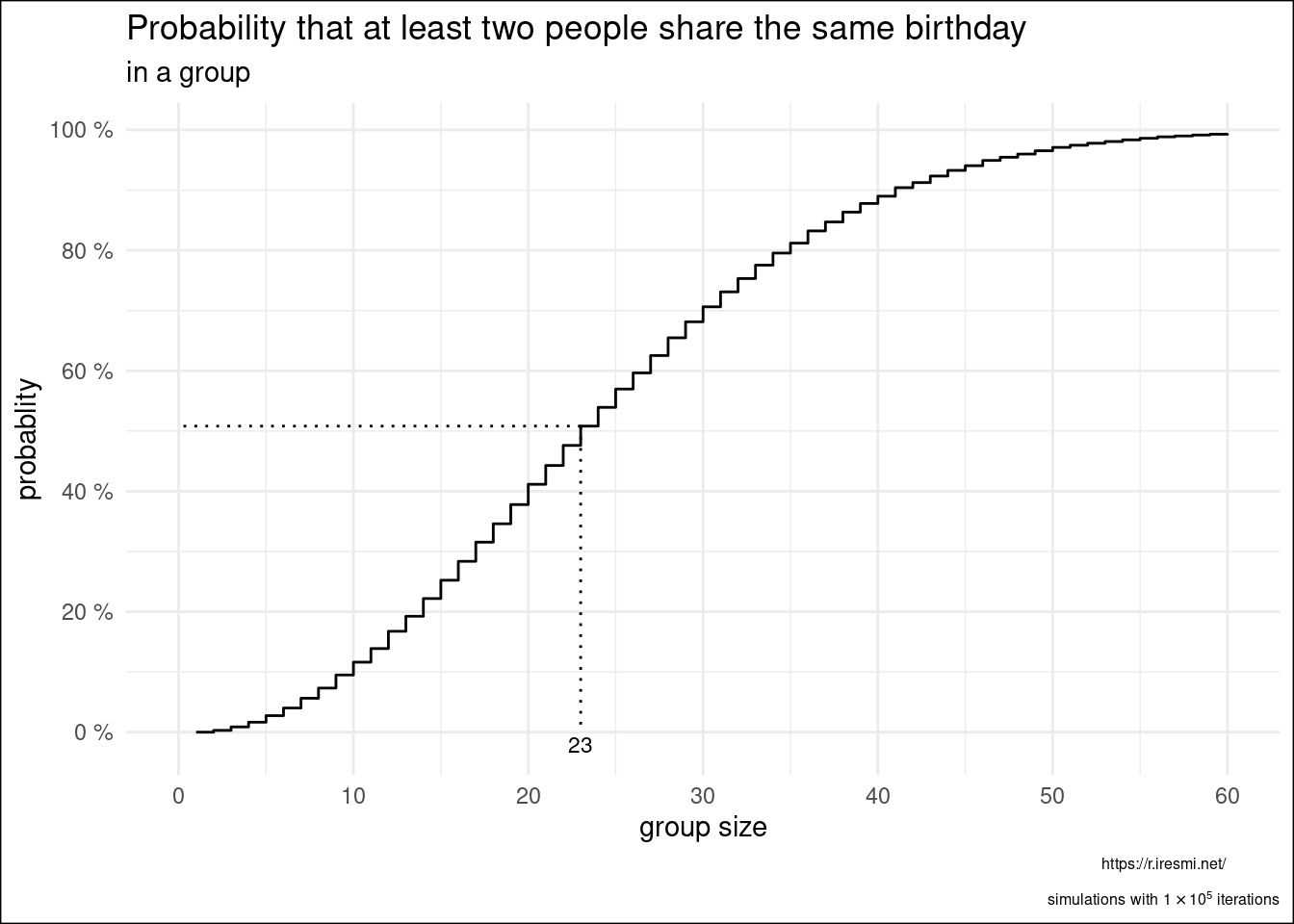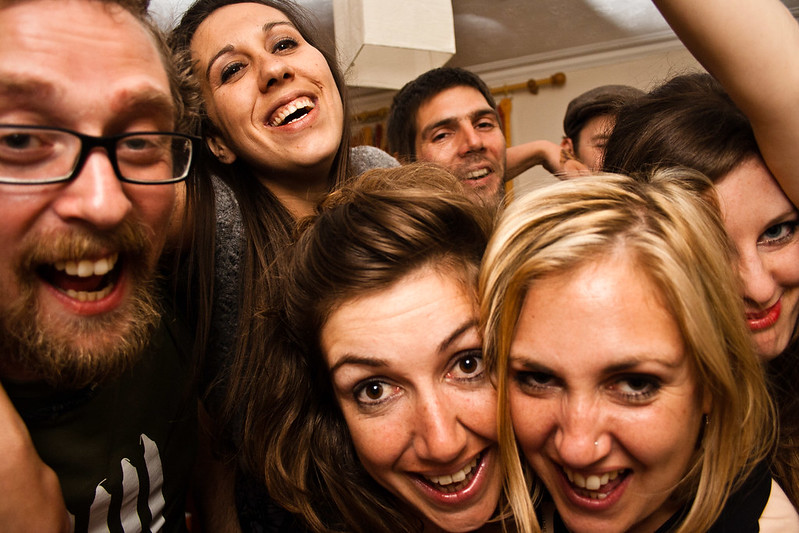# parameters --------------------------------------------------------------
max_group_size <- 60 # we work on groups from 1 to max_group_size individuals
iterations <- 1e5 # for a good precision use more than 1e4
cores <- 10 # number of CPU cores to use
# config ------------------------------------------------------------------
library(dplyr)
library(ggplot2)
library(tibble)
library(furrr)
library(purrr)
plan(multisession, workers = cores)The birthday problem is a classic counter-intuitive mathematical result concerning the probability that two people, in a group, have the same birthday. The formal solution is too complex for me but I can use simulations to find out…
Config
Utilities
Two functions to find birthday date collision in a simulated group and repeat this simulation for different group size.
#' detect a collision in a group of simulated birthdays
#'
#' bissextiles years are taken into account
#'
#' @param group_size (int) : group size
#' @returns (lgl) : is there at least 2 people with the same birthday date ?
birthday_collision <- function(group_size) {
birthdays <- sample(1:366,
size = group_size,
prob = c(rep(1, 59), .2425, rep(1, 306)),
replace = TRUE)
collisions <- group_size - length(unique(birthdays))
return(collisions > 0)
}
#' simulate many groups and compute the collision probability
#'
#' @param group_size (int) : group size
#' @param iterations (int) : number of simulations to run
#' @returns (dbl) : collision probability
collision_prob <- function(group_size, iterations = 1e5) {
res <- vector(length = iterations) |>
map_lgl(\(x) birthday_collision(group_size))
return(sum(res) / length(res))
}
#' Convert scientific number to plotmath expression
#'
#' @param x (num) : a number in scientific format like 1e5
#'
#' @returns : plotmath expresion
scientific_10 <- function(x) {
parse(text = gsub("e\\+*", " %*% 10^", scales::scientific_format()(x))) }Let’s run it! (in parallel)
# simulate for groups with different size
simulated_groups <- tibble(group_size = 2:max_group_size) |>
mutate(proba = future_map_dbl(group_size,
\(s) collision_prob(s, iterations),
.options = furrr_options(seed = TRUE)))
# find the 50% limit
pcent50 <- simulated_groups |>
filter(proba >= .5) |>
slice_head(n = 1)And plot it…
simulated_groups |>
ggplot(aes(group_size, proba)) +
geom_step(direction = "hv") +
geom_segment(data = pcent50, aes(xend = group_size, yend = 0), linetype = 3) +
geom_segment(data = pcent50, aes(xend = 0, yend = proba), linetype = 3) +
annotate(geom = "text", x = pcent50[[1, "group_size"]], y = -.02,
size = 3,
label = pcent50[[1, "group_size"]]) +
scale_x_continuous(breaks = scales::breaks_pretty()) +
scale_y_continuous(breaks = scales::breaks_pretty(),
labels = scales::label_percent(decimal.mark = ",",
suffix = " %")) +
labs(title = "Probability that at least two people share the same birthday",
subtitle = "in a group",
x = "group size",
y = "probablity",
caption = bquote(atop("https://r.iresmi.net/",
simulations~with~
.(parse(text = scientific_10(iterations))[[1]])~
iterations))) +
theme_minimal() +
theme(plot.caption = element_text(size = 6),
plot.background = element_rect(fill = "white"))
We can see that a group of 23 people is enough to get a 50% probability to have at least two people with the same birthday date.
